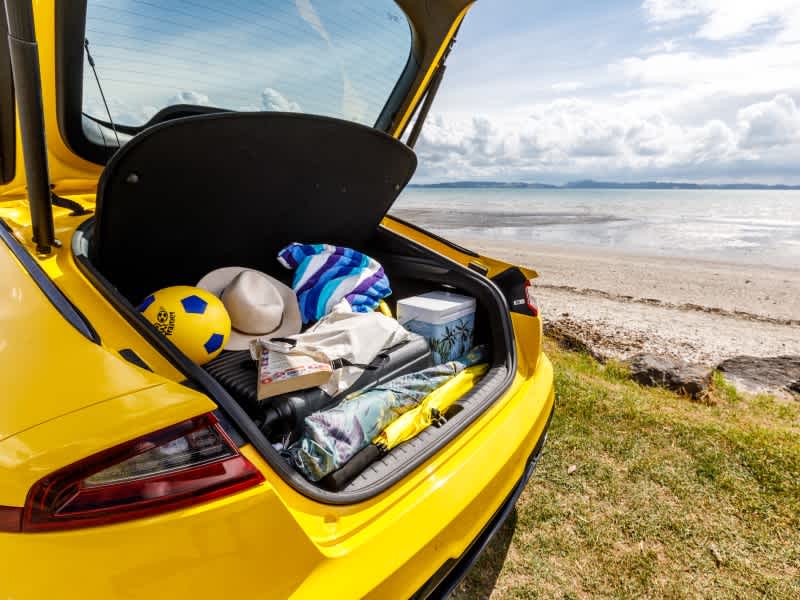
Planning a road trip can feel like a big task, but it pays to take time to do a few simple checks which can help you stay safe on the road.
1. Review your insurance
Is your car insurance up to date? Have a look at:
Who’s listed on your policy: if you’re an AA Insurance customer, you can check this in the “Who’s insured” section of your policy schedule. Any drivers who regularly drive your car should be added to your policy as this will save you time if you need to make a claim. You can do this quickly and easily on your My AA Insurance online account in the “Update your policy section”.
Your car’s agreed value: an agreed value is the maximum amount your insurer will pay if your car is a total loss or stolen (minus your excess and any applicable deductions, such as outstanding or unused premium or on-road costs). If you’re an AA Insurance customer, you can find your agreed value on your policy schedule. Get in touch if you’d like to discuss your agreed value with us.
Your policy wording: it’s important to familiarise yourself with the wording of your insurance policy so you know what’s included and what’s excluded from your cover. You can find the policy documents for all our insurance products on our website.
Before heading away, why not do the similar checks for your contents insurance, paying particular attention to your sum insured? This handy contents calculator, independently provided by Sum Insured, can help you calculate the value of your contents so that you can go on holiday knowing you have enough cover to replace your belongings if you come to make a claim.
2. Have your documentation ready
Before heading away on a road trip, check your documentation is up to date. Is your driver licence still in date? Is your car’s Warrant of Fitness (WoF) still valid? Have you renewed your vehicle’s licence (rego)? It’s illegal to drive a vehicle that doesn’t have a valid WoF or rego so have a look and see if you need to organise an assessment or renew your rego before you set off.
It’s good to have a plan if the unexpected happens on the road, like a puncture or a breakdown. The AA have put together 10 handy tips to help you if your car breaks down which you may want to print and store in your glovebox just in case. As part of their services, they offer roadservice and breakdown assistance and, with an AA Membership, you receive six free callouts per year for new Members and unlimited free AA Roadservice callouts when you’ve been a member for 10 consecutive years or more.
3. Inspect your tyres for wear and tear
There are a few checks you can do on the vehicle before you go. Inspecting your tyres, for example, is a good place to start. Look at the tread depth of your tyre and make sure it’s above the legal limit of 1.5mm. The more your tyres are worn, the less grip they will have on the surface of the road, increasing stopping distances and compromising the safety of you and your passengers. Check the tread by inserting a 20 cents coin into the groove of the tread, with the number 20 parallel to the tyre. If, after insertion, you can see the whole number, your tread is less than 2mm so you’ll need to think about replacing your tyres. If you see any uneven wear of the tread or damage to your tyres like cracks or bubbles on the sides, it may also be an indication that your tyres need replacing. If in doubt, take it into the nearest AA Auto Centre to be reviewed by a professional.
4. Check your tyre pressure
The pressure of your tyres can affect how your car handles corners, brakes and reacts in emergency situations as well as how much fuel your car uses. The required pressure for the tyres on your vehicle can usually be found on the manufacturer’s sticker inside the driver’s door frame, inside the fuel filler flap or in the handbook that came with your car.
You can check the pressure of your tyres using an automatic air compressor or a tyre pressure gauge. Remove the valve cap from the tyre nozzle and press into the valve the air pump gauge or the hose of an automatic air compressor. Check the reading and compare the results with the required tyre pressure listed on the sticker or in the manual. You can pump your tyres with a manual pump if you have one, or for free with an air pump at a petrol station. Don’t forget to screw the valve cap back on the tyre once you’ve topped up.
5. Measure your engine oil
Car engines need oil to keep them running smoothly and efficiently. Oil is an easy one to check; open the bonnet, locate the dipstick and pull it out. Wipe off the oil with a cloth and you should be able to see two markers identifying the minimum and maximum oil levels. Fully insert the dipstick back in and take a look at the highest point, now coated in oil. If it’s between the minimum and maximum markers, you don’t need to do anything. If it’s below the minimum marker, check your vehicle’s handbook to see what type of engine oil is recommended by the manufacturer and where to locate the oil filler cap.
6. Top up the engine coolant
Engine coolant, also known as antifreeze, is a water-based liquid that keeps your engine from overheating by regulating the temperature. Look in your vehicle��’s handbook for the location of the coolant filler cap. If your engine is cold, you can open the filler cap and check that the coolant is between minimum and maximum marks on the side of the tank. If it’s lower than the minimum, look at the handbook to see what coolant type your car requires, as different engines require different coolants. Don’t be tempted to fill it up with water, as it will lower the boiling point and stop the coolant from working as efficiently as it should.
7. Give your windscreens a once-over
Have a look at the level of your windscreen washer fluid, located under your car bonnet and top it up with fresh detergent if needed. Test your wipers before you set off; if they’re not clearing your windscreen properly or leaving streaks, think about replacing the blades. Check the glass for cracks and chips and get any repaired by a professional before you start on your journey as they can grow and spread with changes in temperature and vibrations from the road. You can book a repair with the AA’s Auto Glass mobile service to get your windscreen fixed without needing to leave the house.
8. Test your lights
Have a family member or friend check your brake lights, indicators, high and low beams, reversing lights and fog lights. Lights help you see and be seen on the road, so it’s important you get them fixed straight away if any of them aren’t working.
9. Drive safely
However eager you are to get to your destination, keeping yourself, your passengers and other road users safe is a priority. When you’re at the wheel, it’s important to stay focused on the road. In most cases, it’s illegal to use your phone whilst driving so, if you’re relying on it for navigation, make sure it’s fully charged and that you launch your route mapper before starting your drive. Take regular breaks to rest, nap if you need to, or stretch your legs.
Any questions?
Now’s a great time to review your insurance. We recommend checking your details are up to date and ensuring the policy and cover you’ve chosen is right for you and your insurance needs.
If you have any questions about your insurance, need to update your AA Insurance policies or would like a quote, don’t hesitate to contact us. You can find our opening hours and ways to get in touch with us on our contact page.
This blog provides general information only and is not intended to be a recommendation or personalised financial advice. Excesses, terms, conditions, limits and exclusions apply to AA Insurance Limited’s policies. Please check the policy wording for details of cover. The provision of cover is subject to the underwriting criteria that apply at the time.



